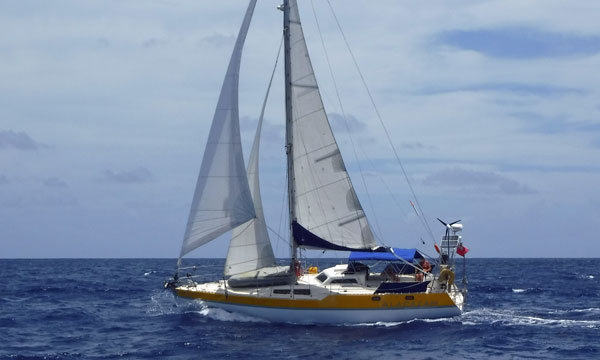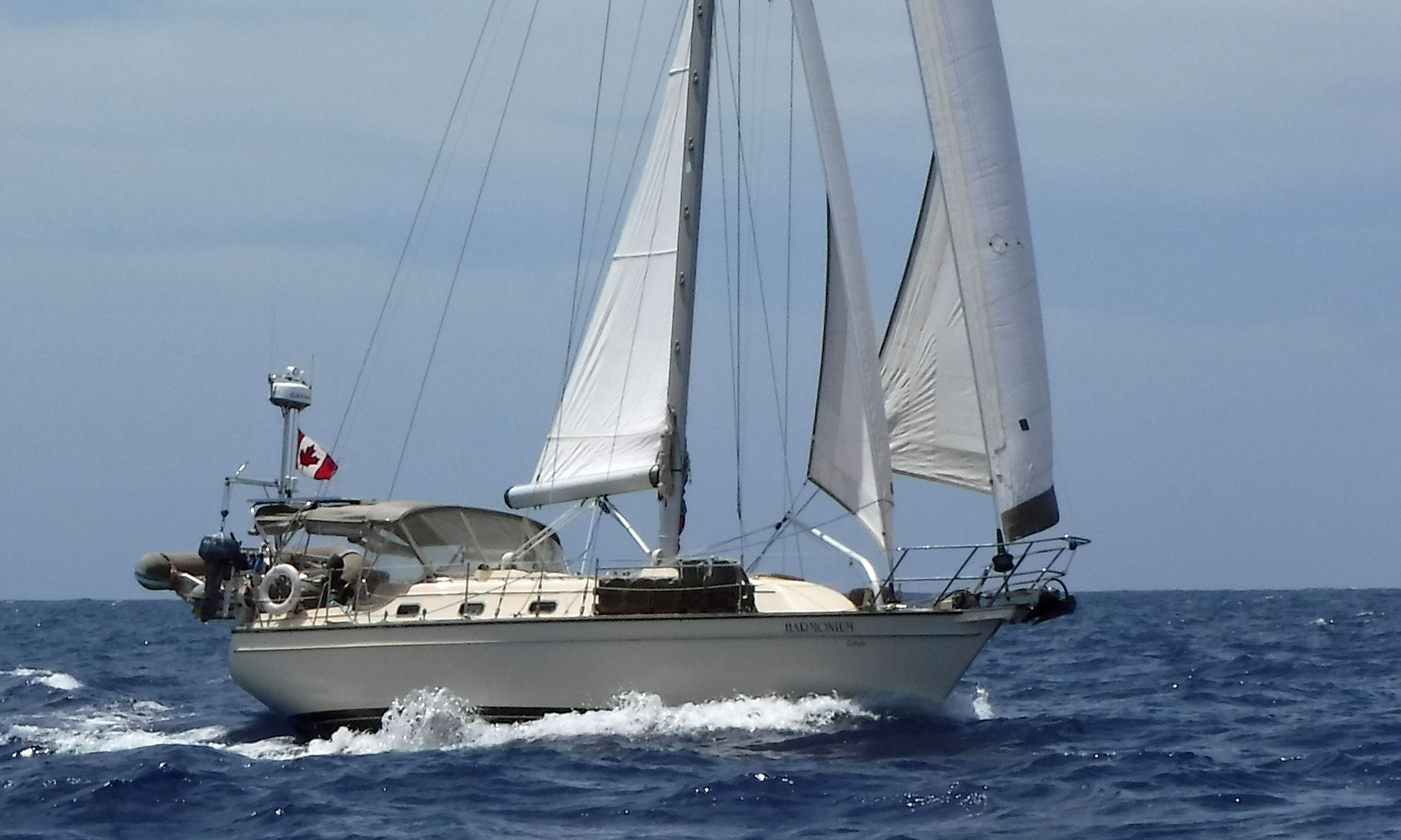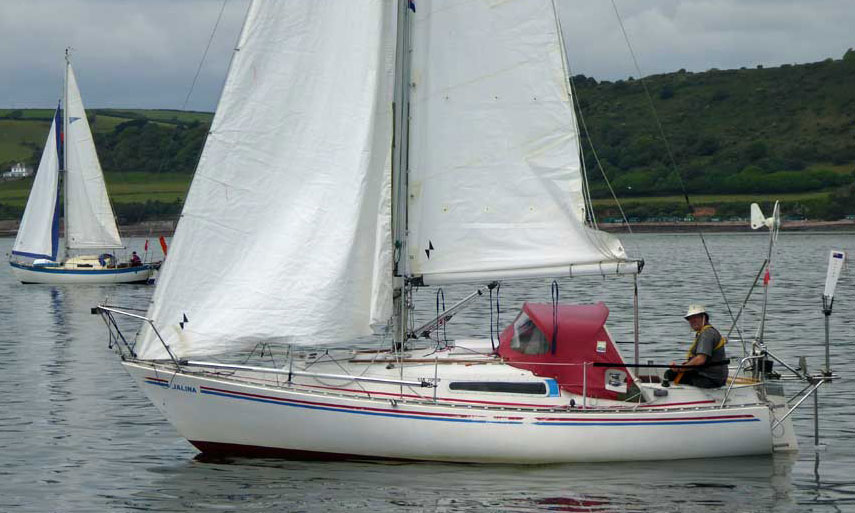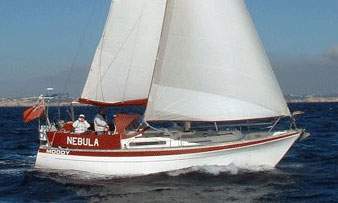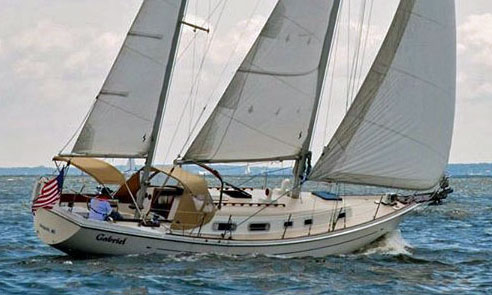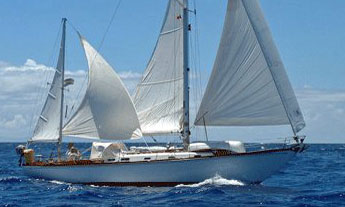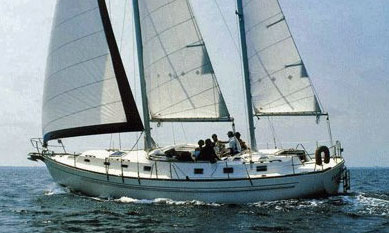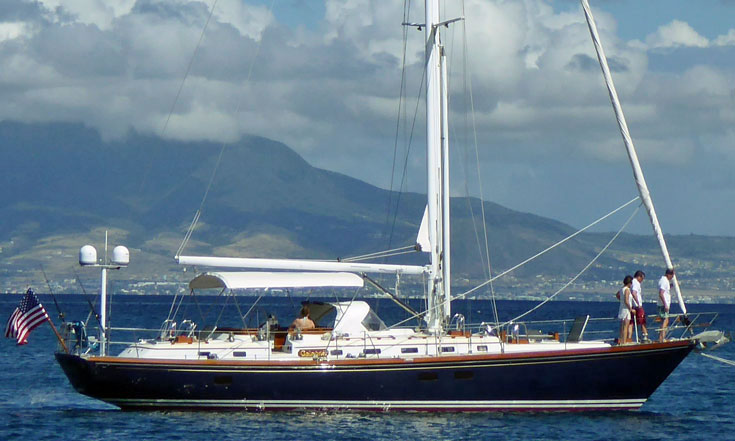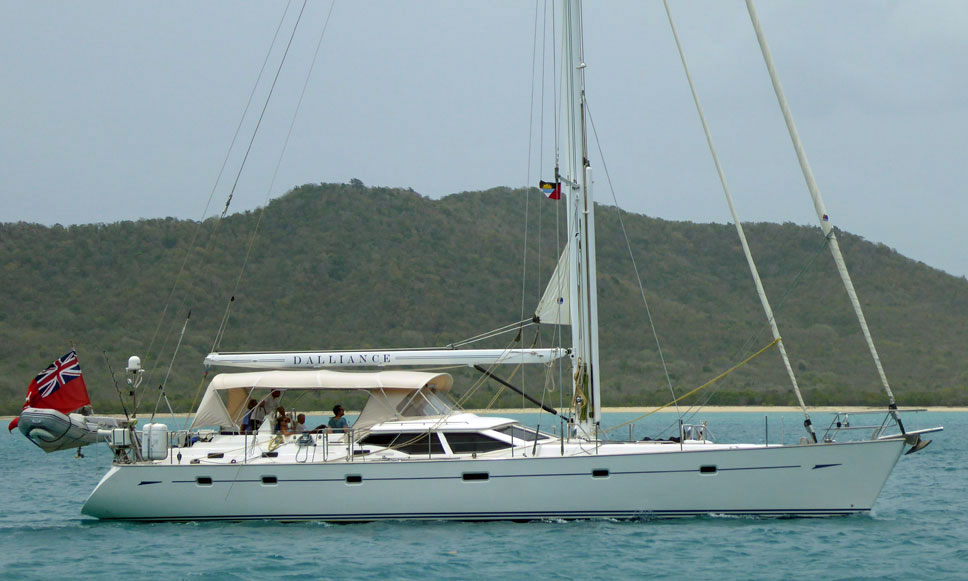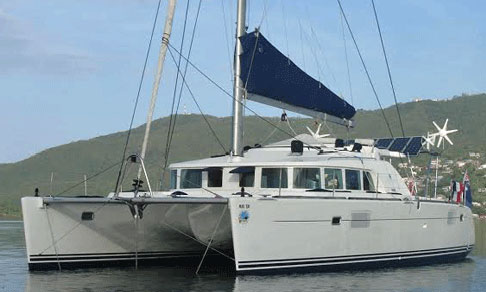- Home
- Types of Sailboats
- Trimaran Vs Catamaran
- Cutter Rig Sailboat
Why the Cutter Rig Sailboat Is My First Choice for Cruising
The cutter rig sailboat has two jibs, the foremost one usually a high-cut yankee set on the forestay and the other a staysail set on an inner forestay. It's a flexible, easy to handle rig, which is why I - along with a lot of other cruising sailors - am such a fan of it.
Admittedly, a cutter rig may not sail to windward as efficiently as a traditional sloop rig. However, its balanced performance on a reach and its inherent versatility more than make up for that slight shortfall. Many cruising sailors, myself included, find that the comfort and safety provided by the cutter rig in varied conditions are hard to beat.
Over time, the cutter rig has evolved, embracing modern innovations that make it lighter, more responsive, and even easier to manage, thanks to advanced composite materials and automated systems.
Modern Innovations & Materials
Today’s cutter rigs benefit from high-tech materials and automated systems that were simply not available in earlier designs. Where once masts were heavy and rigging laborious, many modern installations now feature carbon fiber masts and electronic furling systems.
This means you can adjust your sails at the push of a button—and you’ll also notice a more responsive feel when the wind shifts. The lighter, stiffer construction not only improves performance but may also reduce maintenance, giving you more time to enjoy the open water.
Conversion & Upgrading Options
For those of you sailing a traditional sloop, converting to a cutter rig can open up a whole new world of performance and handling. The conversion isn’t overly complicated—adding an inner forestay, adapting your backstays, and perhaps upgrading your furling system are usually all it takes to enjoy the benefits of an extra foresail.
Such modifications can significantly improve load distribution and overall balance, making your boat even more suited to long passages where versatility and safety are paramount.
Types of Cutter Rig Sailboats
There are two main variants of the cutter rig:
Bowsprit Cutter
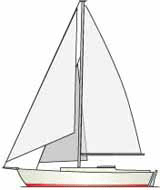
In this setup, the yankee is mounted on a bowsprit with the staysail attached near the bow. This arrangement is commonly found on heavy displacement sailboats.
It increases the size of the foretriangle without requiring a taller mast, which can be particularly useful when you need extra sail area without compromising the boat’s overall stability.
No Bowsprit Cutter
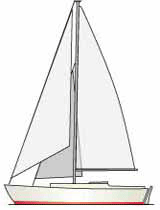
Here, the entire rig remains inboard, with no bowsprit. You’ll see this configuration not only on dedicated cutter designs but also on sloops, ketches, and yawls.
Each arrangement offers unique advantages depending on your cruising style and the conditions you expect to encounter.
Tacking & Rig Tuning
Tacking a cutter rig is a bit more involved than with a traditional sloop because you’ve got two headsails and additional running backstays to manage. On our boat, the process begins by centralizing the mainsheet. We then release the yankee sheet as we bear away, adjust the runners, and finally set the staysail before trimming the sails to let the telltales fly.
The Tacking Sequence:
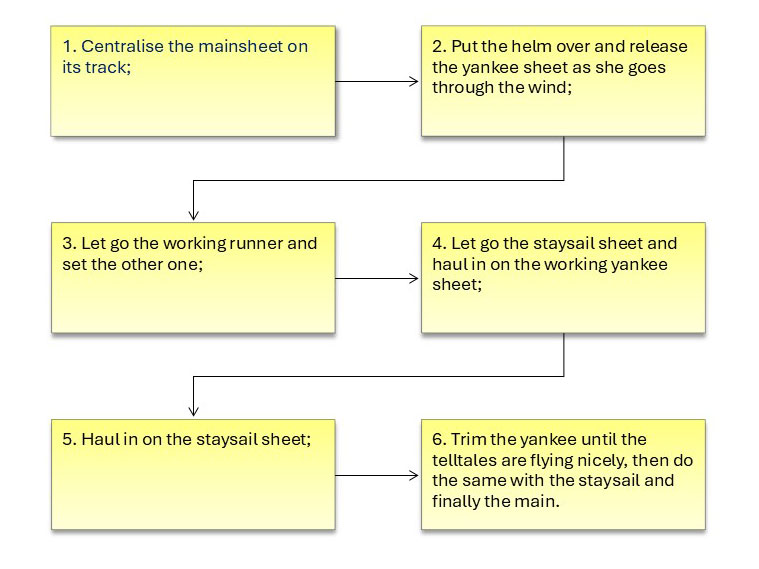
Many staysails are set on a self-tacking boom, which means that going-about is simplicity itself. However, unless you do a lot of short-tacking with both headsails set, this benefit is outweighed by the additional hardware. In my view, that is!
Over time, the importance of proper rig tuning becomes clear. Adjusting the inner forestay tension, fiddling with backstay settings, and fine-tuning the mainsail’s trim all contribute to a perfectly balanced sail plan.
A well-tuned cutter rig isn’t just about following a checklist—it’s about learning how each tweak affects your boat’s performance, whether you’re sailing close to the wind or on a broad reach.
Reducing Sail in Challenging Conditions
When the weather turns, efficiently reducing sail is critical.
With a cutter rig, the process usually starts with reefing the mainsail. Next, you roll a few turns in the yankee before reefing further and finally furling the yankee completely.
This sequence leaves you with a deep-reefed mainsail and a neatly set staysail on the inner forestay, ready to handle conditions up to full gale.
In heavier weather, it’s time to swap in a storm jib or even a trysail—modern automated furling can make these transitions smoother and quicker than ever before.
The Reefing Sequence:
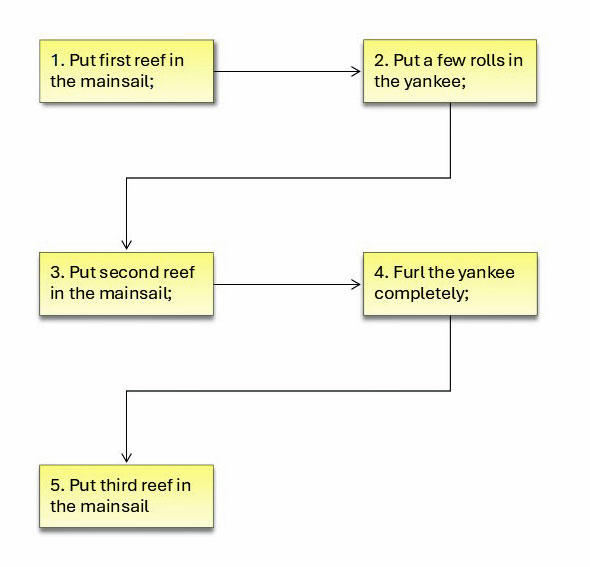
Sailing Off the Wind
On a reach, the balanced nature of a cutter rig really shines. Its well-distributed sails work harmoniously with windvane self-steering systems, keeping the boat on a steady course with minimal constant adjustment.
However, as the wind drops and falls further aft of the beam, you might notice the staysail starting to flap, which disturbs airflow into the yankee. Instead of trying the wing-and-wing technique you might use on a sloop, many sailors opt to drop both foresails and hoist a colourful asymmetric spinnaker.
This not only looks striking but also enhances downwind performance.
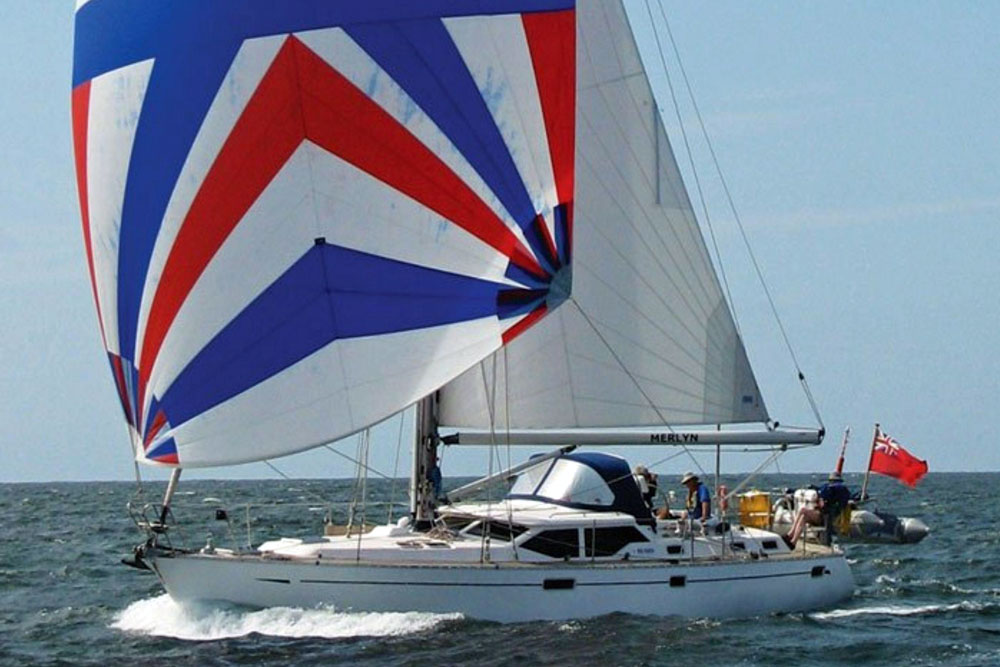 A colourful alternative to sailing wing-and-wing
A colourful alternative to sailing wing-and-wingPractical Handling & Maintenance
Handling a cutter rig takes a bit of practice, especially given the extra components involved. Whether you’re short-handed or sailing with a full crew, clear communication and coordinated manoeuvres are crucial. Running drills for tacking or reefing ensures everyone knows their role, and it helps build that intuitive feel for adjusting your rig on the fly.
Maintenance remains a critical aspect of keeping your rig safe and performing at its best. Modern rigging still requires regular inspections—checking furling gear, examining the inner forestay and backstays for wear, and keeping all moving parts properly lubricated.
Performance in Varied Conditions
The cutter rig’s real strength is its versatility across a range of weather conditions. Although you might see a sloop edge it out slightly when sailing directly into the wind, the cutter’s balanced characteristics become evident on a reach or in changing winds.
When conditions are light, fine-tuning your sail shape can mean the difference between a sluggish sail and one that harnesses every bit of breeze. Conversely, in heavy weather, a well-reduced cutter rig paired with timely storm sails ensures you stay safe and secure.
There’s also something timeless in the cutter rig’s design—a direct link to the rich history of sailing. Originally used on working vessels and later adapted by cruising enthusiasts, the cutter rig has built a legacy of resilience and adaptability. Iconic vessels and storied sailors have celebrated its dependable nature for generations.
Bringing It All Together
Whether you’re an old hand at the helm or just starting your journey, the cutter rig is more than a sail configuration—it’s a lifestyle. Its blend of traditional design, modern materials, and smart technology offers both performance and peace of mind.
By learning to tune your rig, mastering tacking and reefing, and appreciating the innovations that keep the cutter rig relevant, you’re well on your way to a richer, more fulfilling cruising experience.
A Few Questions...
Can one person sail a cutter?
Can one person sail a cutter?
Yes, one person can indeed sail a cutter. In fact, the cutter rig is often considered well-suited for solo sailing. Here's why:
Sail Handling:
- The cutter rig distributes the sail area among multiple sails (mainsail, jib, and staysail), making them smaller and easier to handle than a single large sail.
- This makes reefing (reducing sail area) in strong winds more manageable for a single person.
- The staysail, in particular, can provide a balanced sail plan, which is beneficial for maintaining control when sailing alone.
Versatility:
- The cutter rig offers a wide range of sail combinations, allowing the sailor to adapt to varying wind conditions. This flexibility is valuable when sailing solo.
Historical Context:
- Historically, pilot cutters were designed to be handled by small crews, sometimes even just a couple of people. This inherent design characteristic lends itself well to single-handed sailing.
However, it's important to note that:
- Experience and preparation are crucial for any solo sailing, including on a cutter.
- Modern equipment, such as autopilots and furling systems, greatly assists solo sailors.
In summary, the cutter rig's design and sail distribution make it a viable and often preferred option for single-handed sailing.
What are the names of the sails on a cutter rig?
What are the names of the sails on a cutter rig?
When discussing a cutter rig, the primary sails you'll encounter are:
- Mainsail: This is the sail that is aft of the mast, running along the boom.
- Staysail: This is an inner headsail, set on an inner forestay. It's located behind the forward most sail.
- Jib or Yankee: This is the forwardmost sail. Depending on the cut of the sail it may be called a Jib or a Yankee. A Yankee is a jib with a higher cut clew.
Therefore, the core sails of a cutter rig are the mainsail, staysail, and either a jib or a yankee.
What is the difference between a ketch and a cutter rig?
What is the difference between a ketch and a cutter rig?
The fundamental difference between a ketch and a cutter rig lies in the number of masts:
Cutter Rig:
- A cutter rig has a single mast.
- It's characterized by having two headsails: a jib (or Yankee) and a staysail, in addition to the mainsail.
Ketch Rig:
- A ketch rig has two masts: a mainmast and a shorter mizzenmast located forward of the rudder post.
- It will have a mainsail, a mizzen sail, and at least one headsail. it could also have a staysail, thus making it a cutter rigged ketch.
Here's a breakdown:
Masts:
- Cutter: One mast.
- Ketch: Two masts.
Headsails:
- Cutter: Typically two headsails (jib/Yankee and staysail).
- Ketch: at least one headsail, but may have two.
Mizzenmast:
- Cutter: No mizzenmast.
- Ketch: Has a mizzenmast.
Essentially, a cutter rig is a variation of a single-masted sailboat (like a sloop), while a ketch is a two-masted sailboat.
Recent Articles
-
Is An SSB Marine Radio Installation Worth Having on Your Sailboat?
Apr 14, 25 02:31 PM
SSB marine radio is expensive to buy and install, but remains the bluewater sailors' favourite means of long-range communication, and here's why -
Correct VHF Radio Procedure: Your Questions Answered
Apr 14, 25 08:37 AM
Got a question about correct VHF radio procedure? Odds are you'll find your answer here... -
VHF Marine Radio; Which One is Right for Your Boat?
Apr 14, 25 05:09 AM
If you're looking to buy a VHF Marine Radio the choice can be a bit overwhelming. So what should it be, a fixed VHF or a handheld VHF? Maybe one with AIS or GPS built in perhaps?
